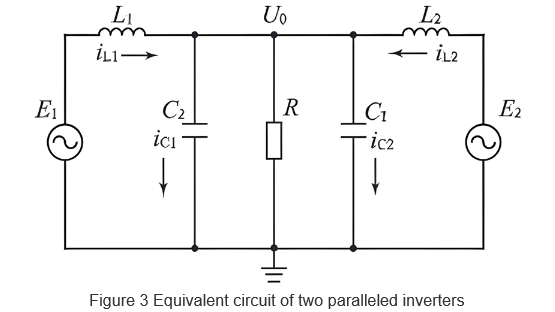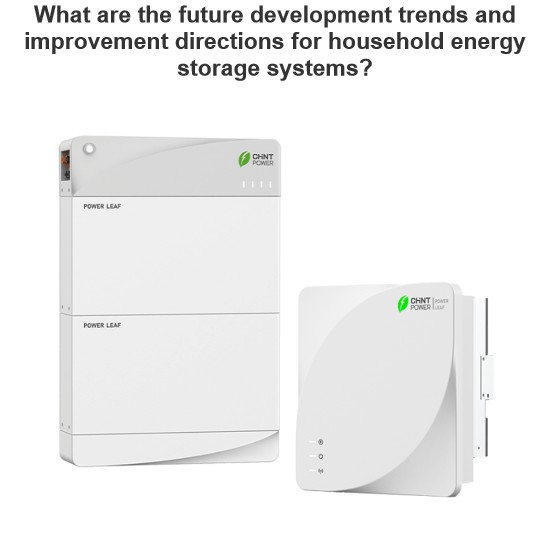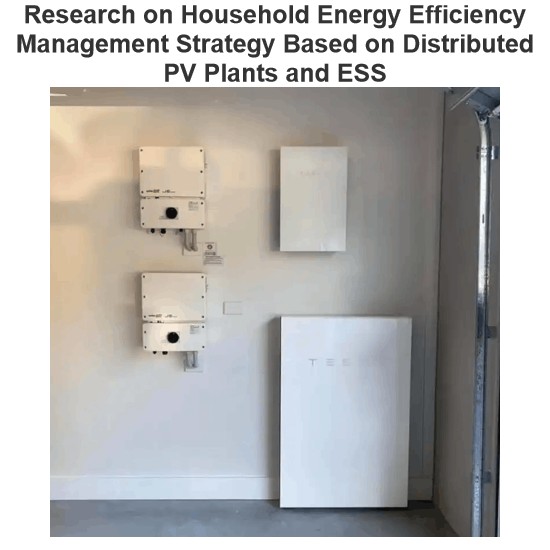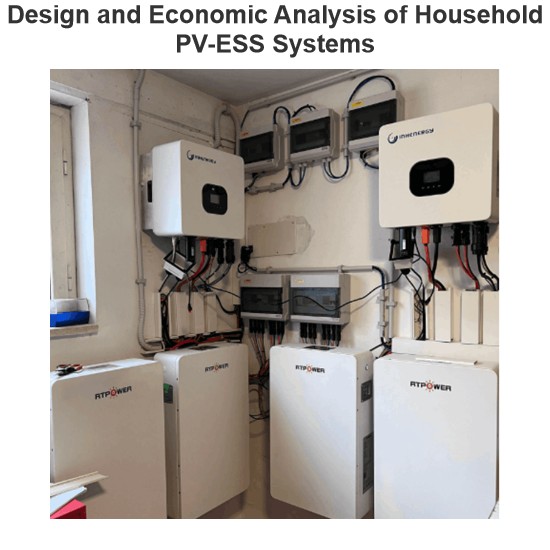Solar energy, as a clean and renewable energy source, is a key new energy supported in China. It has abundant theoretical reserves (17,000 billion tons of standard coal equivalent annually) and enormous development potential. Photovoltaic power generation, once mainly operating off - grid in remote areas, is now rapidly evolving towards building - integrated photovoltaics and large - scale desert - based grid - connected projects.
This paper analyzes split - winding transformers in grid - connected photovoltaic power stations through theoretical analysis and engineering cases.
1 Main Circuit Features of Grid - Connected Photovoltaic Power Stations
The main circuit of photovoltaic power stations is closely related to inverter layouts: distributed inverters are suitable for building - integrated projects, while centralized inverters are preferred for desert photovoltaic power stations (to achieve optimal power generation efficiency under uniform illumination via centralized Maximum Power Point Tracking - MPPT).
However, having more strings or larger - capacity inverters isn’t always beneficial—cable distance, voltage drop, and cost - performance need to be considered. Thus, the cable lengths from strings to combiner boxes to inverters and the areas of photovoltaic blocks are determined by investment - return ratios. For economic optimization, the capacity of centralized inverters typically ranges from 500 kW to 630 kW.
Grid - connected photovoltaic power stations mainly adopt three main circuit schemes (as shown in Figure 1). The single - string scheme (with step - up transformers) is simple but requires a large number of transformers. The large - unit scheme (incorporating step - up transformers) is the mainstream design, balancing cost and efficiency effectively.

This paper discusses the advantages of using split - winding transformers for expanded - unit wiring. Compared to ordinary double - winding transformers, each phase of a double - split winding transformer consists of one high - voltage winding and two low - voltage windings. The low - voltage windings have the same voltage and capacity but only weak magnetic coupling between them, as shown in Figure 2.
This transformer typically has three operating modes: through operation, half - through operation, and split operation. When several branches of the split winding are paralleled into a total low - voltage winding to operate against the high - voltage winding, it is called through operation, and the short - circuit impedance of the transformer is called through impedance X1 - 2. When one branch of the low - voltage split winding operates against the high - voltage winding, it is called half - through operation, and the short - circuit impedance is called half - through impedance X1 - 2'. When one branch of the split winding operates against another branch, it is called split operation, and the short - circuit impedance is called split impedance X2 - 2'.
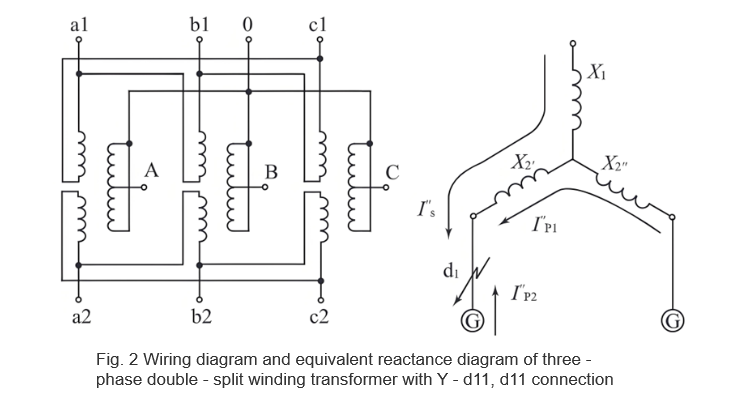
2 Advantages of Split - Winding Transformers
For easier discussion, technical parameters of mature products are cited for quantitative comparison with ordinary double - winding transformers. Take a 2500 kVA split - winding transformer: 37 ± 2×2.5% / 0.36 kV / 0.36 kV, 50 Hz, short - circuit reactance percentage 6.5%, full - through reactance percentage 6.5%, half - through reactance percentage 11.7%, split coefficient < 3.6%.Calculations give:
Full - through reactance: X1 - 2 = X1 + X2 // X2
Half - through reactance: X1 - 2' = X1 + X2
Per - unit values:
High - voltage side branch reactance:
Low - voltage side branch reactance:

2.1 Reducing Short - Circuit Current
During a short circuit at d1 in Figure 2, the short - circuit current has three components: from the system (high - voltage side, with non - decaying periodic components), non - fault branch I''p1, and fault branch I''p2. For the low - voltage circuit breaker on the fault branch, its breaking capacity considers the sum of system and non - fault branch currents.With a split - winding transformer:
System - supplied short - circuit current:
Inverter - type distributed power short - circuit current is 2–4 times the rated current (duration 1.2–5 ms, 0.06–0.25 cycles), and the non - fault branch current is ~4 kA.For an ordinary double - winding transformer (for comparability, assume uk% = 6.5, same as the full - through reactance percentage of the split - winding transformer uk1 - 2%:
The per - unit reactance is:
The system - supplied short - circuit current is:
with additional contributions from non - fault branches.Clearly, using split - winding transformers for expanded - unit wiring significantly reduces the breaking - capacity requirement for low - voltage side branch circuit breakers.
Assume that the parameters of the parallel modules are completely the same and the MPPT control parameters of the inverters are the same. Then, C1 = C2 = C, L1 = L2 = L, and the inductor current of each inverter is:

It can be seen that the inductor current of each inverter consists of two parts: The first is the load current, which is the same for both inverters; the second is the circulating current, related to the amplitude, phase, and frequency differences of the inverters’ output voltages.
Currently, the main control logic for inverters in PV power stations is Maximum Power Point Tracking (MPPT). Solar cell modules have internal and external resistances. When MPPT control makes these resistances equal at a certain moment, the PV module operates at the maximum power point. Taking Figure 3 as an example, the active power P1 and reactive power Q1 output by Inverter 1 are:

2.3 Maintaining Voltage of Non - Fault Branches
Taking Figures 2 and 3 as examples, photovoltaic power stations usually adopt a centralized inverter - transformer layout, and the cable impedance between the inverter and transformer is negligible. With an ordinary double - winding transformer, the voltage of the non - fault branch drops to zero potential. In this case, relay protection is generally used to delay the operation of the non - fault branch circuit breaker to reduce the fault removal range. However, this method may not meet the protection requirements for photovoltaic power stations. If the removal time of the fault branch exceeds the low - voltage ride - through capability of the inverter, the non - fault branch will be forced to disconnect from the grid, increasing the risk of expanding the fault range.
With a split - winding transformer, due to the existence of split impedance, the short - circuit current provided by the system is equivalent to operating in the half - through mode of the split - winding transformer. The short - circuit current supplied by the non - fault branch inverter is equivalent to the split operation mode of the split - winding transformer. At the moment of short - circuit, the output voltage U''2 of the non - fault branch inverter is I''s × X'2+ I''p2× (X''2 + X'''2). Since the high - voltage side is an infinite system, according to the previous discussion, I''s is much larger than I''p2. Therefore, the first part I''s × X'2 does not decay and is larger than the second part I''p2 × (X''2 + X'''2).
Calculations show that U''s > I''s × X'2 = 185 V. The output voltage of the non - fault branch inverter can be maintained at least at about 0.5Un. According to the low - voltage ride - through requirements of the photovoltaic power
station, the removal time is greater than 1 s (50 cycles). Thus, the expanded - unit wiring with split - winding transformers can reliably meet the requirement that the non - fault branch does not disconnect from the grid within the removal time of the fault branch circuit breaker.
3 Conclusion
Split - winding transformers are widely used in engineering, especially suitable for grid - connected photovoltaic power stations. As discussed above, their advantages mainly lie in reducing short - circuit current, restricting operating circulating current, and maintaining the voltage of non - fault branches. Based on engineering design examples, this paper theoretically analyzes their application advantages in photovoltaic power stations, providing certain guiding significance for the selection of wiring forms and equipment in grid - connected photovoltaic power station projects.








